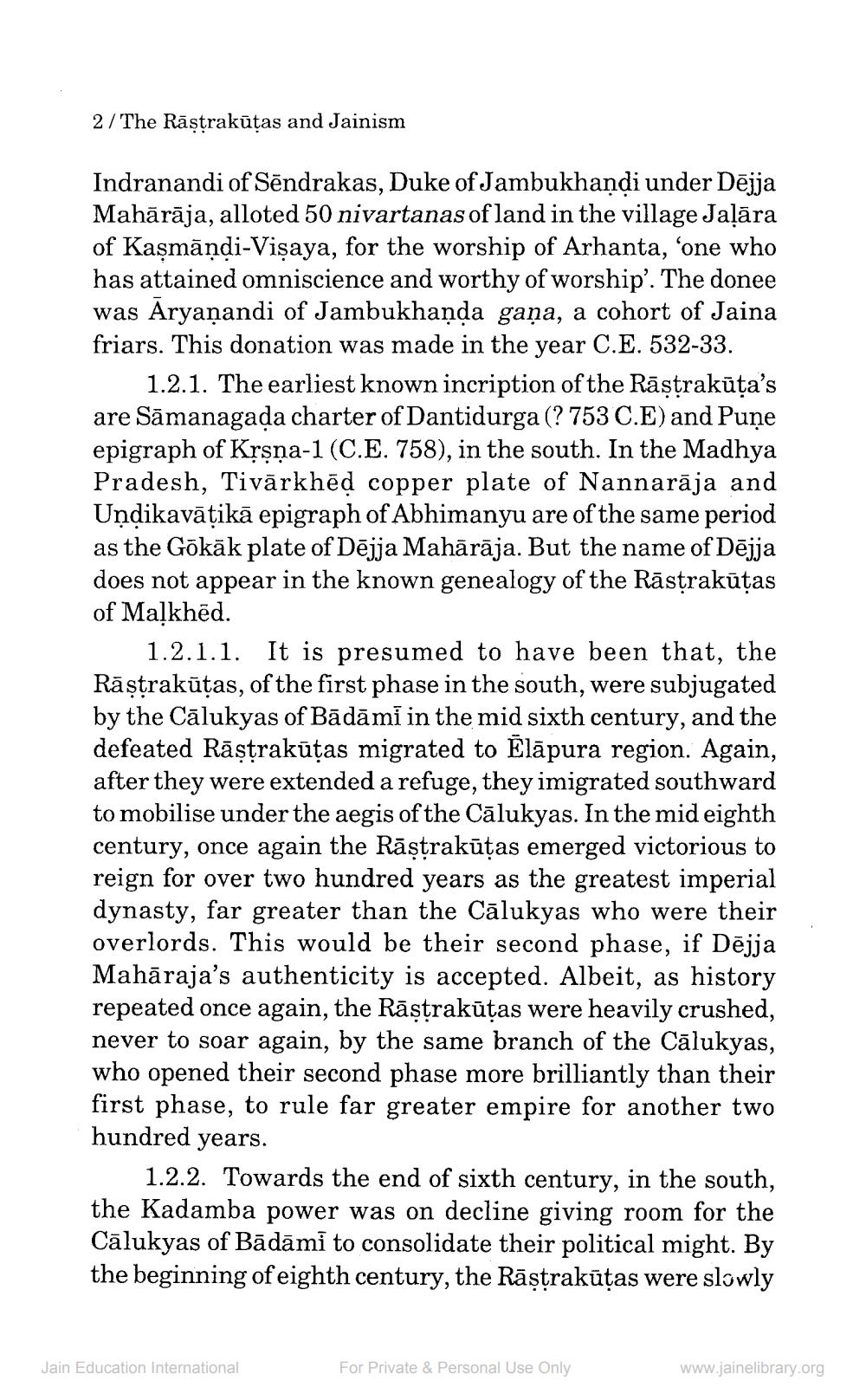________________
2/The Rāṣṭrakūtas and Jainism
Indranandi of Sendrakas, Duke of Jambukhandi under Dējja Mahārāja, alloted 50 nivartanas of land in the village Jaļāra of Kaṣmandi-Visaya, for the worship of Arhanta, 'one who has attained omniscience and worthy of worship'. The donee was Āryaṇandi of Jambukhaṇḍa gaṇa, a cohort of Jaina friars. This donation was made in the year C.E. 532-33.
1.2.1. The earliest known incription of the Raṣṭrakūṭa's are Samanagaḍa charter of Dantidurga (? 753 C.E) and Pune epigraph of Kṛṣṇa-1 (C.E. 758), in the south. In the Madhya Pradesh, Tivārkhēḍ copper plate of Nannarāja and Undikavāṭikā epigraph of Abhimanyu are of the same period as the Gōkāk plate of Dējja Mahārāja. But the name of Dējja does not appear in the known genealogy of the Rāsṭrakūtas of Malkhed.
1.2.1.1. It is presumed to have been that, the Rāṣṭrakūtas, of the first phase in the south, were subjugated by the Calukyas of Bādāmī in the mid sixth century, and the defeated Rāṣṭrakūtas migrated to Ēlapura region. Again, after they were extended a refuge, they imigrated southward to mobilise under the aegis of the Calukyas. In the mid eighth century, once again the Rāṣṭrakūtas emerged victorious to reign for over two hundred years as the greatest imperial dynasty, far greater than the Calukyas who were their overlords. This would be their second phase, if Dējja Mahāraja's authenticity is accepted. Albeit, as history repeated once again, the Rāṣṭrakūtas were heavily crushed, never to soar again, by the same branch of the Calukyas, who opened their second phase more brilliantly than their first phase, to rule far greater empire for another two hundred years.
1.2.2. Towards the end of sixth century, in the south, the Kadamba power was on decline giving room for the Calukyas of Bādāmi to consolidate their political might. By the beginning of eighth century, the Raṣṭraküṭas were slowly
Jain Education International
For Private & Personal Use Only
www.jainelibrary.org




